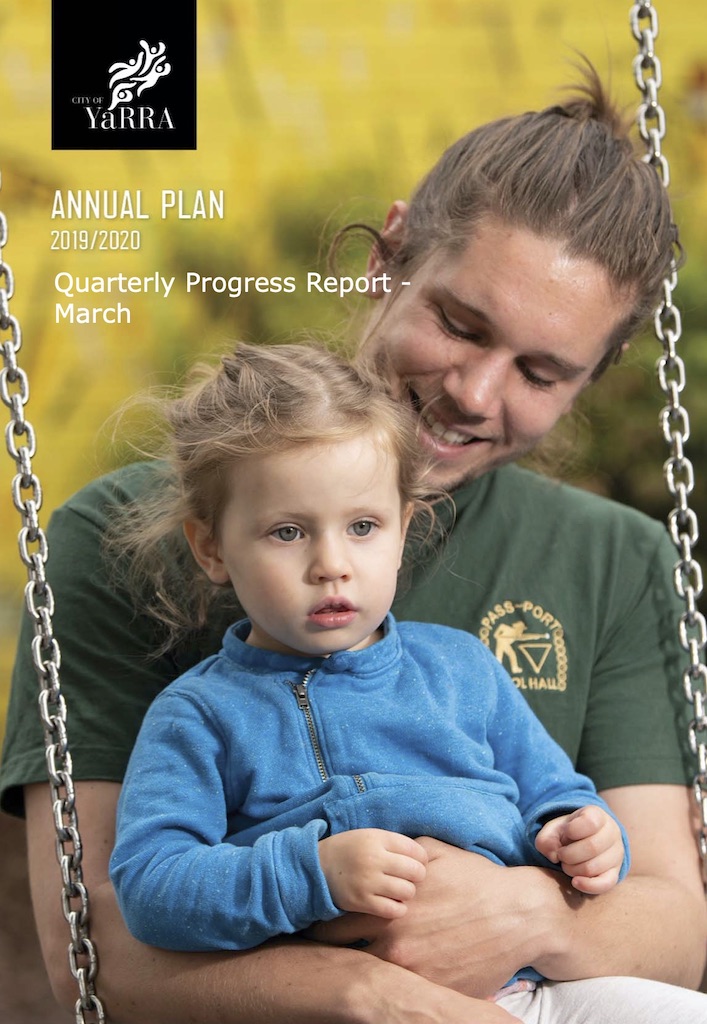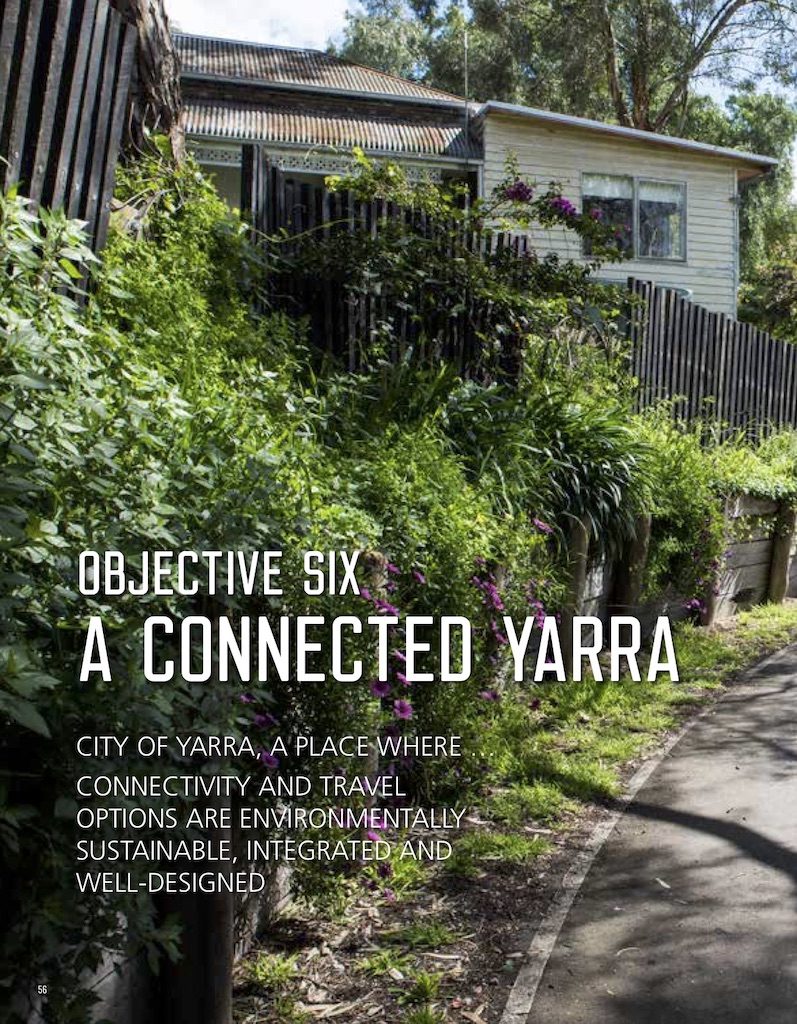The Local Government Act 1989 requires Councils to have a Council Plan. Yarra also produces an Annual Plan alongside each annual budget, and reports to describe progress. The Council Meeting on 5th May 2020 will consider the latest progress report.

Strategic Objectives
The Council Plan has seven Strategic Objectives – Streets Alive Yarra is mostly interested in the ‘a connected Yarra’ objective and its associated strategies and actions.

6.0 A connected Yarra
Objective 6 contains the following clear statement, which is also replicated in the progress report:
Council is committed to creating a city that is accessible to all irrespective of levels of personal mobility, to support a fulfilling life without the need for a car.
Council Plan Objective 6
The progress report then defines six strategies to achieve the objective, as well as six actions. The problem is that the actions simply aren’t enough to achieve the objective. This is a structural failure of management – each year, in each annual budget, Council fails to allocate enough budget and street space so that Officers are able to achieve the objective in a reasonable time frame, such as over 10 years.
In addition, the progress reports fail to use performance metrics that represent the objective. Instead of reporting on the details of minor actions, Yarra should adopt and report on performance metrics that reflect the objective. For example:
- Performance metric #1: each residence in Yarra can represent the origin of a journey to the closest public high school, conducted by a child on a bicycle. If Yarra has 45,000 residences, there would be a dataset of 45,000 possible journeys. What percentage of these journeys can be completed without exposing the child to hazards which carry the risk of serious injury or death? This percentage value is the performance metric. Cycling to school can be considered safe if the journey can be completed on quiet, calmed streets where traffic speeds and volumes are below defined thresholds, or on protected bicycle lanes on busier streets.
- Performance metric #2: each residence in Yarra can represent the origin of a journey to the closest public library, conducted by a senior in a wheelchair. What percentage of these 45,000 possible journeys can be completed on our footpath network, without requiring deviations onto the streets so as to avoid obstructed or sloping footpath segments? Again, this percentage value is the performance metric.
6.01 Variable parking trial and parking forum
Council is to be congratulated for conducting a ‘variable parking trial’ on Bridge Road. However, the trial didn’t go far enough. It didn’t adopt best practice, which is demand responsive pricing. The result was a pricing strategy that failed to respond to shopper demand and failed to maximise shopper (and trader) satisfaction. As a next step, Council should work with the VPA in Cremorne to study demand responsive pricing across the whole Cremorne LAPM area.
6.02 Low speed traffic environments
Council is to be congratulated for conducting a 30 km/h trial in Fitzroy. As a next step, Council should roll out 30 km/h zones to all LAPM areas by 2030, and should continue to advocate to State Government for all arterials to use a consistent, permanent 40 km/h.
6.03 Complete Wellington Street bicycle lane
Council is to be congratulated for completing the Wellington Street bicycle lane. As a next step, Council should decrease the ‘level of traffic stress’ on all streets by implementing traffic filtering (blocking through traffic) in all LAPM areas by 2030, thus diverting high-speed through traffic (rat runners) to the arterials.
6.04 Review Local Area Place Making policy
Council is to be congratulated for reviewing LAPM policy. It seems odd that the Local Area Place Making policy is being reviewed by the Traffic and Civil Engineering Branch, instead of the Planning and Place Making Branch. The review should include how Council has failed to address structural barriers that prevent Objective 6 (and associated strategies) in the Council Plan from being completed within a reasonable time frame, e.g. 10 years, considering our rate of population growth. The LAPM policy review should recommend that all LAPMs areas be reviewed within each 4-year term of Council, with each LAPM area receiving, on average, a budget of $2m.
6.05 Advocate for Disability Discrimination Act compliant tram stops
Council is to be congratulated for advocating for DDA compliant tram stops. The problem is that DDA compliant tram stops don’t just need advocacy, they need action. Council should support DDA compliant tram stops by trialling them on Brunswick Street.
6.06 Public transport advocacy
Council is to be congratulated for advocating for improved public transport services. The problem is that we don’t just need advocacy, we need action. As a next step, Council should support improved public transport ‘clearing the way’ for faster trams by relocating shopper parking from shopping streets to the first 5-10 bays on side streets. This will allow greater ‘movement’ capacity of arterials owing to the greater movement capacity of best practice bike lanes, helping people to transition from driving to cycling, thus decreasing the number of cars on the road, which enables trams to speed up.
Published 3rd May 2020
